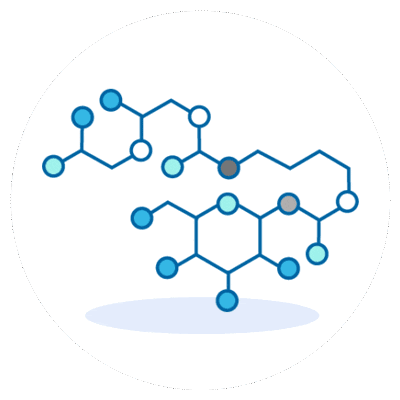Changing lives through cell survival
Become part of the next great medical discovery. AAGP®, our proprietary anti-aging glycopeptide has incredible opportunities to improve health therapies for ophthalmology, dermatology, transplants and biomanufacturing. By protecting cells against inflammation, AAGP® could be the essential link to medical advancements that provide more hope to more patients.

Home / Anti-Aging Glycopeptide (AAGP®)
AAGP® key benefits
AAGPs® are small, stable molecules that display abilities in resolving challenges confronting medical researchers in regenerative medicine. Because of its molecular makeup, AAGP® should function without side effects common in other treatments. See more advantages of AAGP®.
Backed by research
Highly bioavailable
Keeps cells alive
Backed by research
Highly bioavailable
Keeps cells alive
Protects against inflammation
Patent protected
Safe for humans
Cell survival is in our nature
Molecules must be less than 1,000 Daltons to pass through cell junctions into neighboring cells and less than 600 Daltons to diffuse through capillaries or cross the blood-brain barrier. AAGP® was invented to be a smaller, more stable synthetic version of AFGPs. They are just 580.96 Daltons and much less expensive to produce.
- 2002
Initial public offering - 2003
First intellectual property (IP) filing - 2005
Initial application for pipeline research - 2010
Good Manufacturing Practice processing and toxicology study success - 2014
IP second filing and Type 1 diabetes islet transplantation study - 2016
Preclinical validation in Type 1 diabetes and peer reviewed papers - 2016
IP third filing and induced pluripotent stem cells study for macular degeneration - 2019
Preclinical validation in macular degeneration - 2020
Engage Food and Drug Administration for consultation on Investigational Drugs and Devices approval for topical products - 2020
Large-scale bioproduct validation - 2020
First licensing agreement for topical products - 2021
Published phase one clinical results for Type 1 diabetes - 2021
Orphan disease status approval - 2021
Initiate phase one clinical trial for macular degeneration - 2022
Initiate phase two clinical trial for Type 1 diabetes - 2022
Milestone partnership agreement for biological biosimilar production
Structure
- Molecular formula: C20H35CIF2N4O11
- Structure: Ala-Ala-Lys-F-C-F-Galactose
- Molecular mass: M = 580.96 g.mol-1
- Size: 580.96 Daltons
Solubility (at 25°C)
- Solubility in water: 650 g.L-1
- Soluble in water, methanol ethanol and DMSO
- Lightly lipid soluble
Compound characteristics
- White powder
- Highly hygroscopic
Stability
- Stable at a pH of 2 to 14
- Stable at temperatures of -196°C + 37°C
- No enzyme degradation from proteases or galactosidases
Bioactivity
- Optimal concentration of 1 to10 mg/ml, depending on cell lines and stress tests
- Optimal pH of 5.3 to 7.3, depending on cell lines and stress tests

Mechanism of action
AAGP®’s ability to protect against inflammation-induced cell death in exposure to hydrogen peroxide, UVA and UVC suggests a role for AAGP® in the inflammation pathway. When exposed to an inflammatory mediator, interleukin ß (ILß), the presence of AAGP® reduced COX-2 expression threefold.
Inflammation plays a major role in many pathological conditions suggesting AAGP® may not just be usable in cell and organ storage but also in pharmacological treatments.
Principal investigators
AAGP® has gone through years of international testing by some of the top researchers in the world. Get to know our principal investigators.
Our Patents
ProtoKinetix is proudly patented for the use of AAGP® in a variety of clinical research applications.

AAGP® research
Since 2005, AAGP® has gone through international laboratory testing conducted by some of the top researchers in the world. See their scientific contributions.
Research pipeline
We are moving cell survival forward by addressing the health conditions that affect our lives. See where we are today and where we are heading next.






